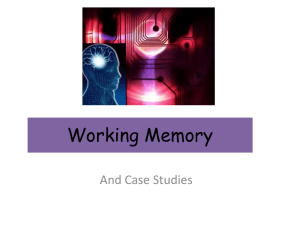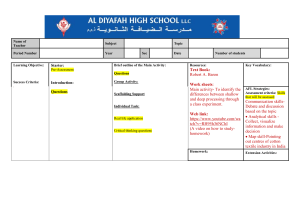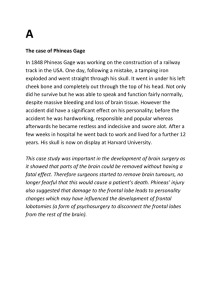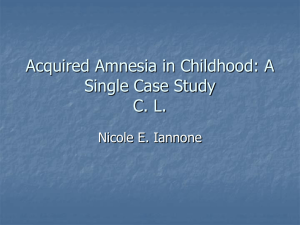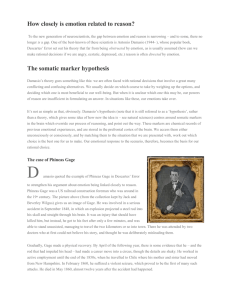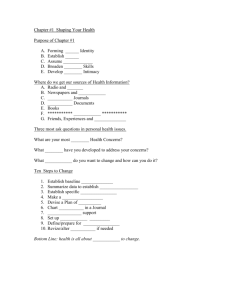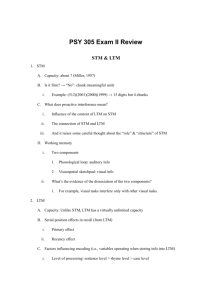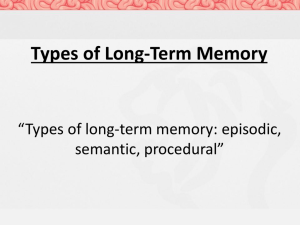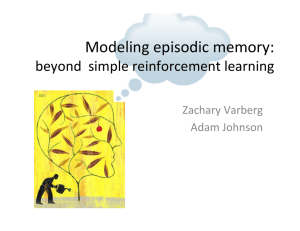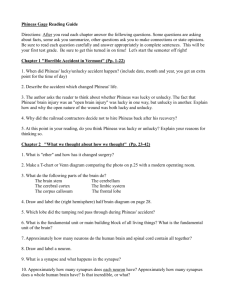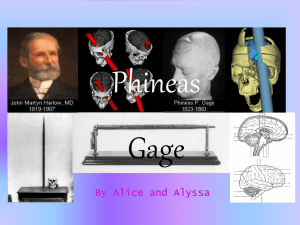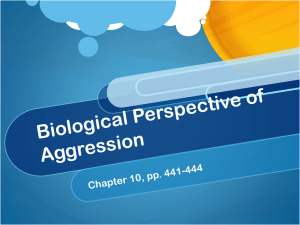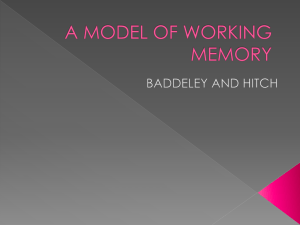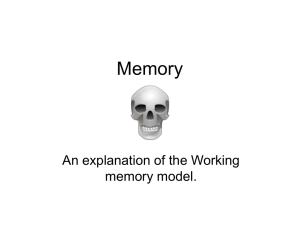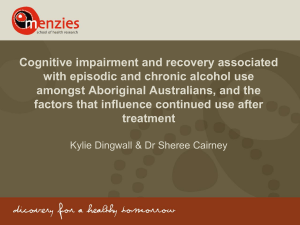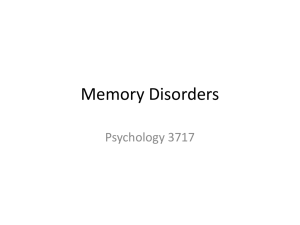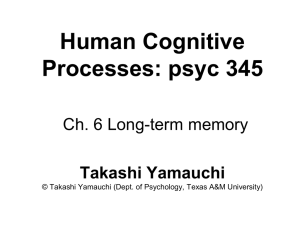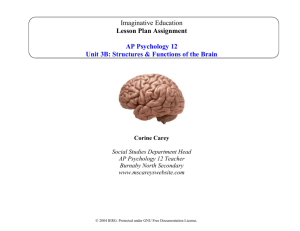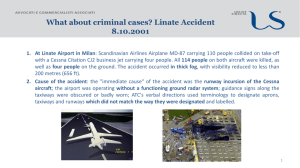Working memory model- Ref Psych-exchange
advertisement
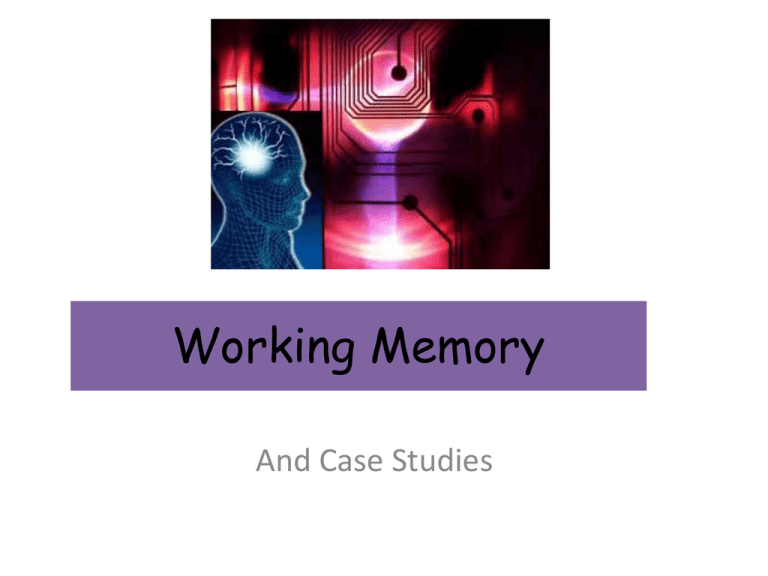
Working Memory And Case Studies Working Memory Model Components of working memory Central Executive: Directs attention to particular tasks. It controls the other systems by determining how resources will be allocated. (Think a control tower at an airport.) Phonological loop: Controls auditory information. Further subdivided into the phonological store (inner ear) and articulatory process (inner voice). Visuo-spatial pad: Processes visual and spatial information (how things look and where they are). Episodic buffer: general store. Added later to the model to account for things that use both visual and acoustic information. Evidence to support the WM model: Do it yourself: What evidence is there to support the Working Memory model? Please present one study to support the existence of: 1. The Central executive 2. Phonological loop 3. Visuo-spatial sketch pad 4. Episodic buffer Please give the names of the experimenters, the procedure, the results and the conclusions of your study. Case Studies What is a case study? A case study is a detailed study of one individual or event. Many different psychological techniques can be used (e.g., questionnaires, interviews, personality tests). The findings attempt to represent the individual’s thoughts, emotions, experiences and abilities. The Case of Phineas Gage In the year 1848, a terrible accident occurred. Doctors report: [The tamping iron] entered the cranium, passing through the anterior left lobe of the cerebrum, and made its exit in the medial line, lacerating the longitudinal sinus, fracturing the parietal and frontal bones extensively, breaking up considerable portions of the brain, and protruding the globe of the left eye from its socket, by nearly half its diameter. Phineas Gage lived for 12 years after the accident. He was able to speak normally, however, his personality changed massively after the accident. Whereas before he was well-liked, responsible, and hard-working, he now became restless, indecisive and swore a lot. What does Phineas Gage’s case tell us about the brain? -Showed that parts of the brain could be removed without having a fatal effect. -Different areas of the brain are in control of different fuctions. - Damage to the front of the brain leads to personality changes. The Case of KF In the 1970s, KF was in a motorcycle accident, resulting in brain damage to his left occipiatal lobe (pictured right). STM was damaged (digit span of 1), but LTM was normal He remembers words better if presented visually as opposed to auditorally. KF’s memory What does KF’s case study tell psychologists about memory? Which model does it support? Although his LTM is intact, his STM is not, which supports the Multi-Store Memory model. However, he remembers words better if presented visually rather than auditorally, which supports the Working Memory Model. The Case of HM HM’s brain compared to normal brain HM’s lobotomy In the 1940s, HM had a lobotomy performed on him to correct epileptic seizures. After the surgery, HM was no longer able to form new long-term memories. For many years, he believed that he was 27 years old, and the year was 1953. HM had kept his procedural memory (memory for skills) but not his episodic memory (memory of events). His body knew the way to his doctor’s office, even though he didn’t!! What does HM’s case tell psychologists about memory? There are different long-term memory stores (procedural and episodic). HM’s case also supports Peterson and Peterson’s study. His short term memory is about 20 seconds long. Clive Wearing Now, watch this video on Clive Wearing, a man like HM, who has no long-term memory. He, too, can form procedural memories but not episodic memories. Case Studies Please answer the following questions: 1. In what way have the case studies we just looked at enhanced your understanding of memory? 2. Why do you think there are so many case studies related to memory? 3. Describe what research methods were likely to be used in the case studies we just looked at? 4. Suggest two advantages of using case studies rather than experiments. 5. Suggest two weaknesses. 6. A hospital is interested why some patients with head injuries recover faster than others. Why would you recommend using case studies, and how would you do it?
